Tutorial
You can download  this tutorial in pdf format.
this tutorial in pdf format.
This is a brief introduction to chords. A good introduction to chords can also be found in the
book Picture Chord Encyclopedia by Hal Leonard. The following is my interpretation of what
chords are about, if it helps you, that's great. If you feel I am off track then discard it
or better yet point out the error of my ways.
What are chords? A chord is 3 different notes played together. It can also be four or five
notes. For example the C major chord is comprised of the C, E and G notes. On the guitar it
is customary and good musical practice to play the C root of the chord, the C note first.
The same can be said for all other chords: C#, D, E♭, etc.
On the guitar a 3-note chord is often played with five notes, two of which are the same but one octave
higher. For example, C major has the notes C, E, G, C, E. 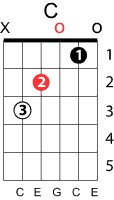 In the case of G major all six guitar strings are used and only 3 notes are different. The notes are G, B, E, G, B and G.
In the case of G major all six guitar strings are used and only 3 notes are different. The notes are G, B, E, G, B and G.
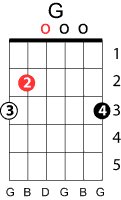
A chord is like the beautiful scent of a flower, it's a rich mixture that can be adapted to
many moods. For example the seventh chord such a C7 provides a sense of anticipation,
a minor chord in the same scale can denote sadness or melancholy. Many others are
used to provide bluesy, jazzy or other temperaments and emotions.
I started playing the guitar by ear with the help of friends, motivated by the love of
great songs. I bought the odd chord book and was baffled by the great number of chords
with no apparent rhyme or reason in their structure. I want to put back the reason and
make finding and using chords easy.
My first revelation was that you can't play all strings on certain chords. You can
play all strings on the E, G and barred F. You cannot play the 6th string
(see Figure 1 for the position of the 6th string) on the C or A chord and you cannot
play the 6th or 5th string on the D chord.
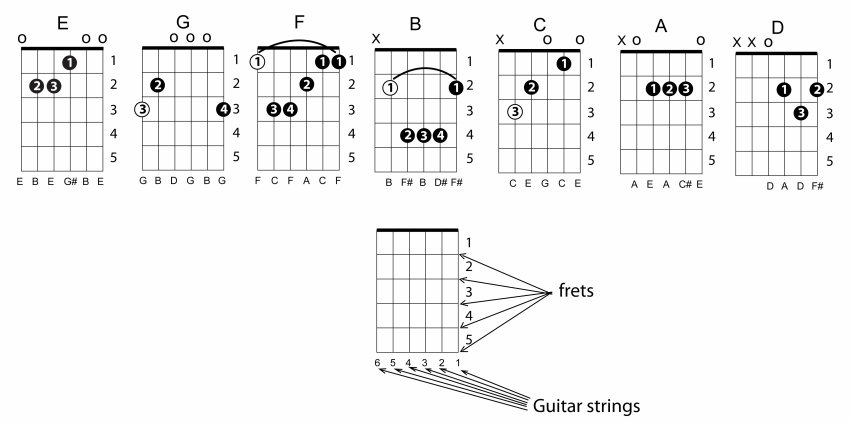
Figure 1. Strings that are not to be played, open strings to be played and strings numbers.
The X's in the diagrams of Figure 1 clearly indicate what strings not to play. The O's
indicate an open string to be played. The root note (shown as a white circle) of the
chord should always be played first.
Why are they not played, because those notes are not part of the chord. The chord has a
certain code that spells out exactly what notes are to be played. More about this later.
Another interesting development was finding out about the CAGED organization of thre guitar or way of seeing
chords. The guitar is tuned such that the chords C, A, G, E and D can be played (by adding
a bar) all the way down the guitar neck. A good example is the A chord. If you bar the
first fret and repeat the A pattern you get Bflat, carry this over to the second fret
and you get the B chord etc. all the way up (see Figure 2). This means that you only
need to know a few patterns to memorize a multitude of chords.
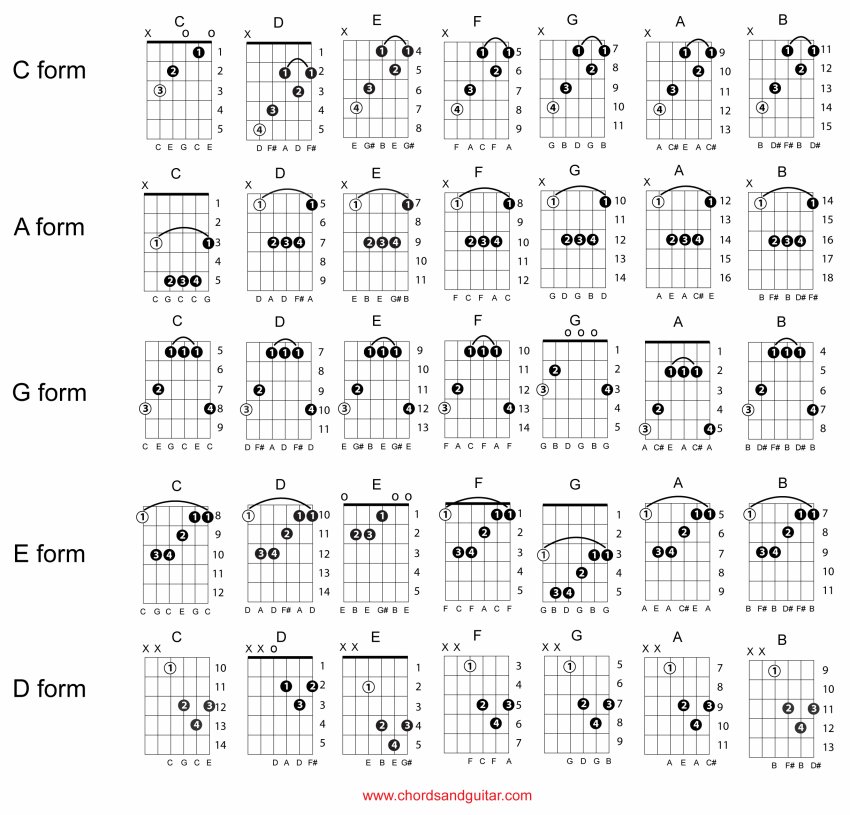
Figure 2. Chords shown with the CADED method.
It is not easy to play some of these chords because of the wide finger extensions
required such as in the A chord in the G form of Figure 2.
Another way to think of these chords is to imagine that you are always making
a bar chord even when playing the open string version of the CAGED chords,
the ones on the left in Figure 1. This means that when you play the C in open
version your bar falls on the other side of the 1st fret or the
0th fret. It then becomes a question as to how you position your fingers to
play all these chords using the same forms all the way down the neck.
Even more interesting is that songs are played in a scale, the C scale,
D or other. All notes that are played will belong to that scale. The
same applies to chords. Each scale has a corresponding set of chords.
For example the C scale has the C, Dm, Em, F, G, Am and Bdim chords.
So if you are searching for the chords of a song and you know the
key then you know the chords that will be played, this will help you
find the chords to the songs you want to play.
A good example of this is the song "Because" by the Dave Clark Five.
The Dave Clark Five were a group in the sixties very similar to the Beatles,
this song is typical of the period in sound, harmony and style. At the time a
band like the Dave Clark Five would put out an LP (vinyl recording played 33
rpm with around 20 songs) and maybe one or two of the songs would be good, this
is a good one. The Beatles put out an album where all the songs were good, it
was revolutionary. After that, all the bands had to pick up their socks. Back
to the song "Because", it starts with a G which is an indication that it is played in the G scale.
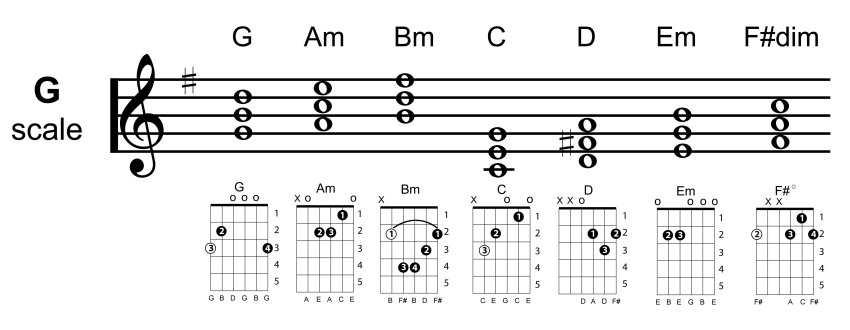
Figure 3. G chord scale.
You can listen to the song by downloading this mp3: www.musiconguitar.com/Dave_Clark_Five-Because.mp3
and also see the lyrics and chords on this pdf: www.musiconguitar.com/Dave_Clark_Five-Because.pdf
The main chords of the song are all in the G scale. Variations on the chord G and C are used to
produce nice harmonies. The D is replaced with D7 to produce more tension otherwise all the
chords are in the G scale, see for yourself.
Notes and scales
Notes are the basic units of scales. The scale most people know and would have learned in school is the C major scale. This scale has the notes:
C D E F G A B C
There are seven distinct notes in this scale. Wait a minute you say, what about C#, D flat, etc.
On a music staff the C major scale is shown as:

Figure 4. C major scale
Yes of course, there are more notes than just the seven mentioned above but in the C major scale
these are the only ones.
They are in total twelve twelve individual notes each separated by an interval called a half step, they are:
C C# D D# E F F# G G# A A# B
or
C D♭ D E♭ E F G♭ G A♭ A B♭ B
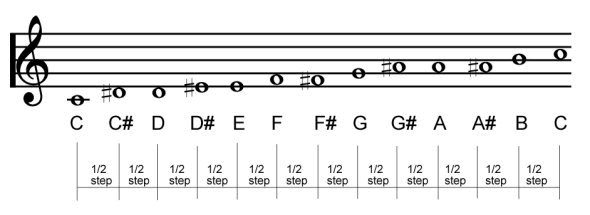
Figure 5. Scale with all notes starting at C using only sharps.
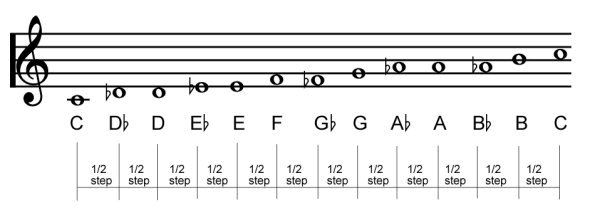
Figure 6. Scale with all notes starting at C using only flats.
The defining characteristic of a major scale
is that the notes in the scale are separated by a distinct pattern of intervals.
That pattern for a major scale is 1 step - 1 step - 1/2 step - 1 step - 1 step - 1 step - 1/2 step.

Figure 7. C major scale showing the pattern of intervals.
This is why in the C major scale you don't see any sharps or flats. The pattern
of steps produces notes that are neither sharp nor flat. However this changes in
a scale with a higher pitch such as C# or D major scales. To find the notes of
the C# major scale use the same pattern of intervals (1 step - 1 step - 1/2 step -
1 step - 1 step - 1 step - 1/2 step) starting on the C# note.

Figure 8. C# major scale showing the pattern of intervals.
Here we begin to see new and unusual notes such as E# (E sharp) and B#.
E# is really an F and B# is really a C. They use this trick to avoid having two
F's and two B's as basic notes on this scale. Verify this for
yourself using the intervals as shown in Figure 7.
The D major scale is:
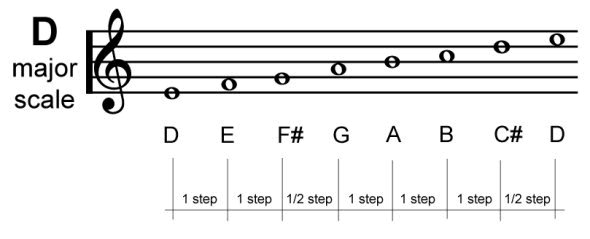
Figure 9. D major scale showing the pattern of intervals.
In this case we now only have 2 sharps, F# and C#. It is customary to put
the sharps of the scale in the staff on the left hand side. This lets you
know immediately the scale of a musical piece.
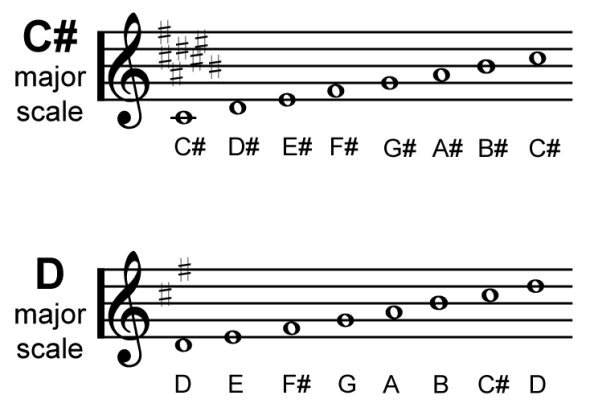
Figure 10. C# and D major scales with staff notations.
You can do the same with all the notes in the chromatic scale creating all the scales
with sharps corresponding to the notes in Figure 2.
The same can be done if you work your way downwards starting at C and using flats.
The major scale is divided into intervals that are called chord tones and are numbered: 1 - ♭2 - 2 - ♭3 - 3 - 4 - ♭5 - 5 - ♭6 - 6 - ♭7
- 7. In the C major scale this will coresspond to: C(1) - C#(♭2) - D(2) - E♭(♭3) - E(3) - F(4) - F# (♭5) - G(5) - G#(♭6) - A(6) - ♭B(♭7) - B(7).
A chord is defined by the interval spacing between each of it's notes. By definition the C major chord
has 3 notes which have an interval pattern of 1-3-5, therefore the chord notes are C - E - G.
And now let's move on to a brief introduction on the nature of chords and their proper notation.
A major triad is a chord with 3 notes that has notes that belong to a major scale.
The code of a major chord is 1-3-5. If you apply this interval pattern to each note on a major scale,
say the C major scale for example, and build up a triad you get the chords shown in Figure 11.
This provides a sequence of chords which is major-minor-minor-major-major-minor-diminished.
Where do the minor chords come from? They arise because when you combine notes to make a chord,
you start with the root note, then skip the following note in the scale to provide the second
note of the chord then skip the following note again to provide the third note of the chord.
The interval length between these notes changes and that is why you get the minor and the
diminished chords.
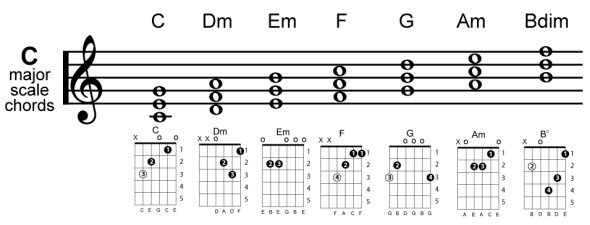
Figure 11. C major chord scale.
Try it out on your guitar it's sounds exactly like what you would expect.
In chord books chord families are sometimes presented in the following order:
C - C# - D - E♭ - E - F - F# - G - A♭ - A - B♭ - B
This is completely arbitrary and many books have a different sequence. On a
web site we can offer all the choices, it is particularly important to have
the right chord notation to match up with the scale of the musical piece.
To match up with all scales it will be useful to have also:
D♭ - D# - G♭ - G# - A# and also E# - B# - C♭